| ANNOUNCING THE WINNERS OF THE TWELFTH ANNUAL PACE PITCH CONTEST | ||||||||||
|
||||||||||
The Twelfth Annual Pace Pitch Contest
Presented by
The Entrepreneurship Lab

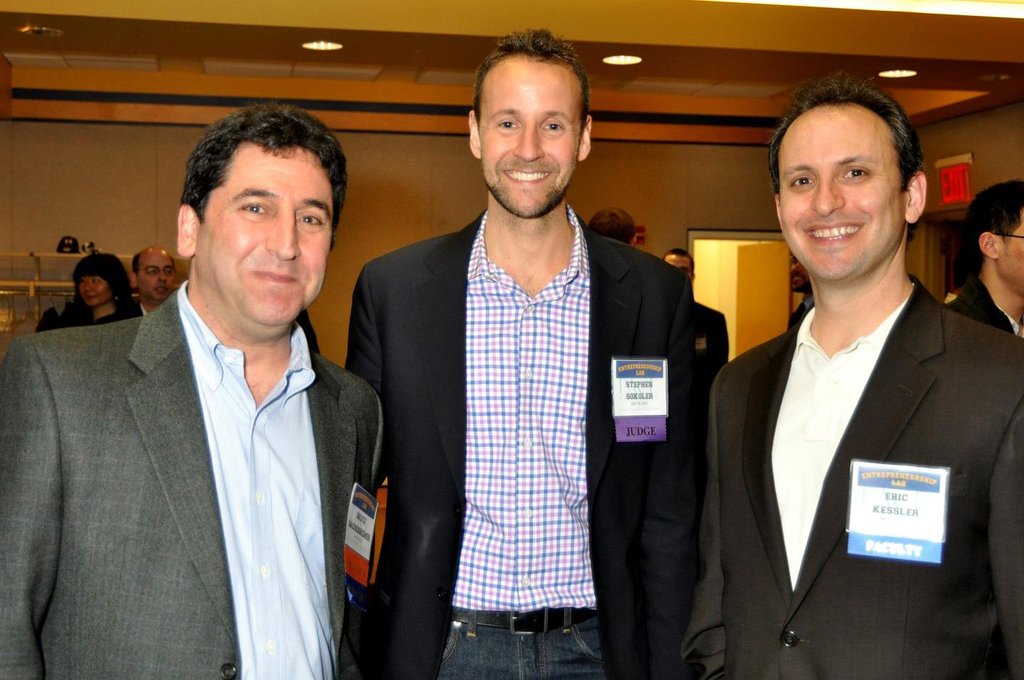

Come watch 7 Finalists pitch their social ventures and new business concepts
Date: Thursday, April 14th 2016
Time: 5.30 p.m. to 8.30 p.m.
Venue: Bianco Room, One Pace Plaza,
New York NY 10038
For more information see the "How to Enter" tab below
- 5:30 - 6:00 Registration and Networking
- 6:00 - 6:15 Welcome
- 6:15 - 7:15 Finalists make their Pitch
- 7:15 - 7:30 Break (Judging Panel selects the winning pitches in private)
- 7:30 - 8:30 Awards Ceremony and Networking
KEYNOTE SPEAKER
David Arabov, Co-Founder and CEO, EliteDaily.com
David Arabov graduated from Pace University’s Lubin School of Business in 2012 with BBA in Business Administration and Management. He has always had an entrepreneurial spirit that drove him from very early on. While at Pace, he started his first business Elite Daily which is now one of the most popular sites among millennials. He first saw a void in the marketplace in the traditional media and came up with a different alternative, a medium that is diverse and a voice of this generation.
By doing so he managed to create a platform that is disrupting the media as we know it. The site is attracts millions of new users every month and employs over 35 millennials.
EMCEE
Bruce Bachenheimer, Executive Director, Entrepreneurship Lab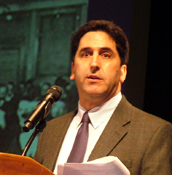
Bruce Bachenheimer is a Clinical Professor of Management and Executive Director of the Entrepreneurship Lab at Pace University. He teaches undergraduate and graduate courses, primarily in the areas of entrepreneurship, management, and strategy. He is also the creator and organizer of the annual Pace Pitch Contest and Pace Business Plan Competition. Mr. Bachenheimer is a member of the Board and past Chair of the New York City Chapter of the MIT Enterprise Forum and has served on the organization’s Global Board. He serves on the Board of Directors & Advisors of LeadAmerica and has served as a consultant to governmental organizations and a variety of new ventures. He has been widely quoted in a variety of domestic and international publications and interviewed on radio and television
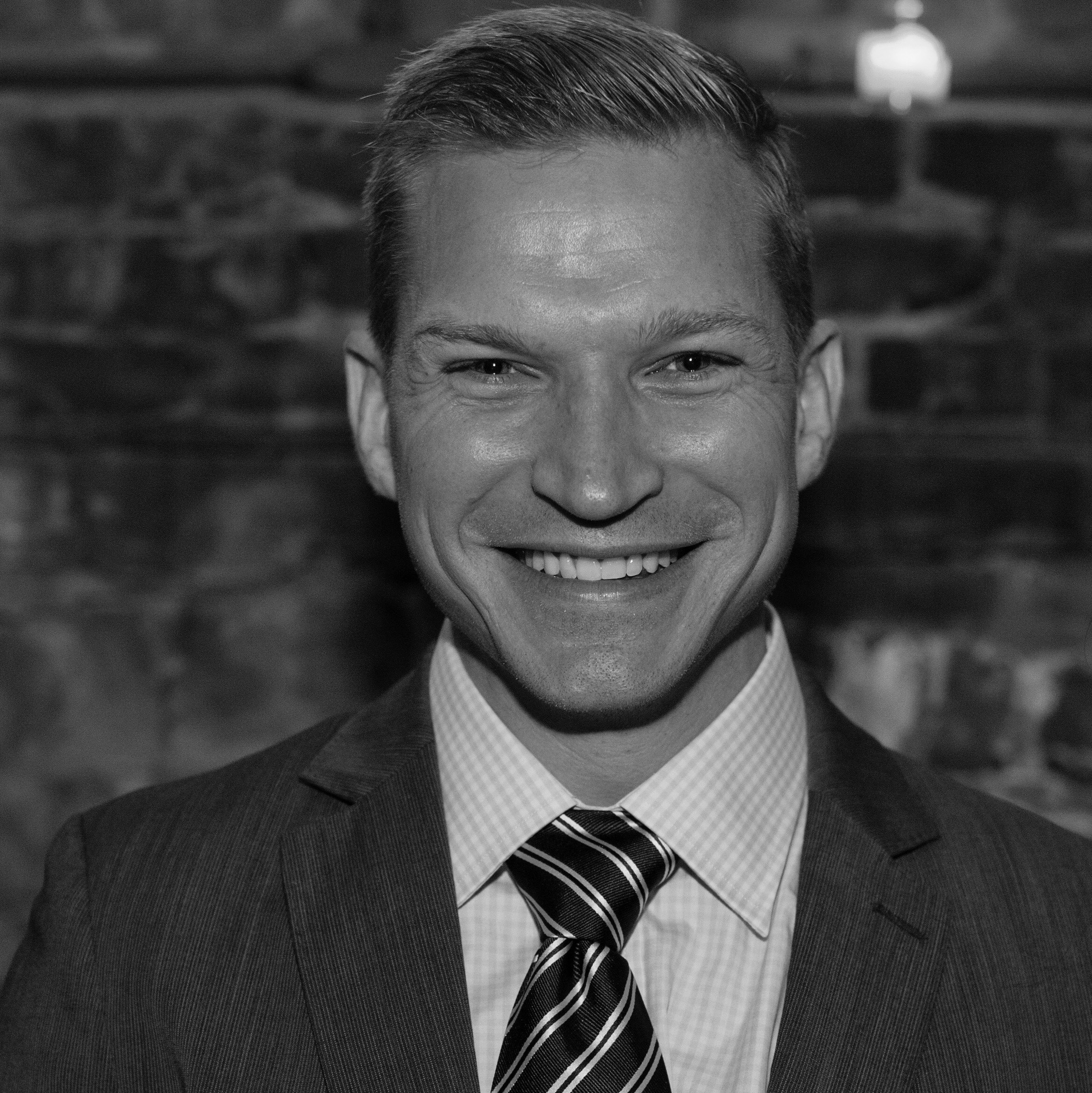
Brendan J. Hart is co-founder and CEO of Prosper, an integrated platform for New York City’s veteran business community. In addition to Prosper, Brendan is an adjunct for the National Science Foundation's (NSF) Innovation Corps (I-Corps) program. Brendan spent the 2013-2014 academic year as a non-resident fellow at the Dartmouth Entrepreneurial Network. In this role, he and his team researched emerging financial technologies; digital and crypto currencies, and mobile payments; financing models behind global public-private partnerships; and the impact of radical urbanization on global capital markets. Brendan started his career as a small unit leader in the United States Marine Corps’ premier anti- terrorism unit, FAST Company. Brendan graduated from Dartmouth College and lives in Brooklyn, NY
Justin Hendrix, Executive Director, NYC Media Lab
Justin Hendrix is Executive Director of NYC Media Lab. Hendrix connects companies seeking to advance digital media technologies with New York City’s universities to drive collaborative R&D and innovation. The Lab's interests range across disciplines from design to engineering, and its programs include seed projects with member companies as well as The Combine, which encourages digital media startup formation on the City’s campuses. Previously Hendrix was Vice President, Business Development & Innovation for The Economist, where he directed prototyping and commercialization of new digital media business concepts. He is a regular writer and speaker on media & innovation. Hendrix holds a Bachelor of Arts from the College of William & Mary and a Master of Science in Technology Commercialization from the McCombs School of Business, University of Texas at Austin. He lives in Brooklyn. Follow him on Twitter @justinhendrix.
Maria Mähl, Senior Program Manager, Clinton Global Initiative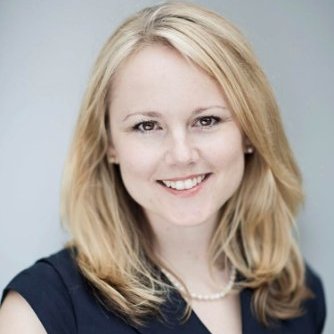
Maria Mähl is an impact strategist focused on turning ideas into action. As a Senior Manager with the Clinton Global Initiative she curates CGI’s Annual Meeting covering health, climate change, energy, education, infrastructure, tech, social enterprises, and economic development issues, with a special focus on sustainable finance and impact investing. Prior to joining the Clinton Global Initiative, Maria advised global leaders in the private, public and civil society sectors on strategy and implementation, business development and operational excellence. She’s worked across industry sectors in European, Asian, African, American and Latin American markets and led teams and built companies in entrepreneurial environments as well as MNC’s and NGO’s. Maria attended Humboldt University, the Berlin Institute of Technology and Uppsala University and holds a Bachelor of Political Science and a Masters in Business and Economics. She’s from Sweden and lives in New York City.
Larry Perlstein, EVP, Social Life Management Inc.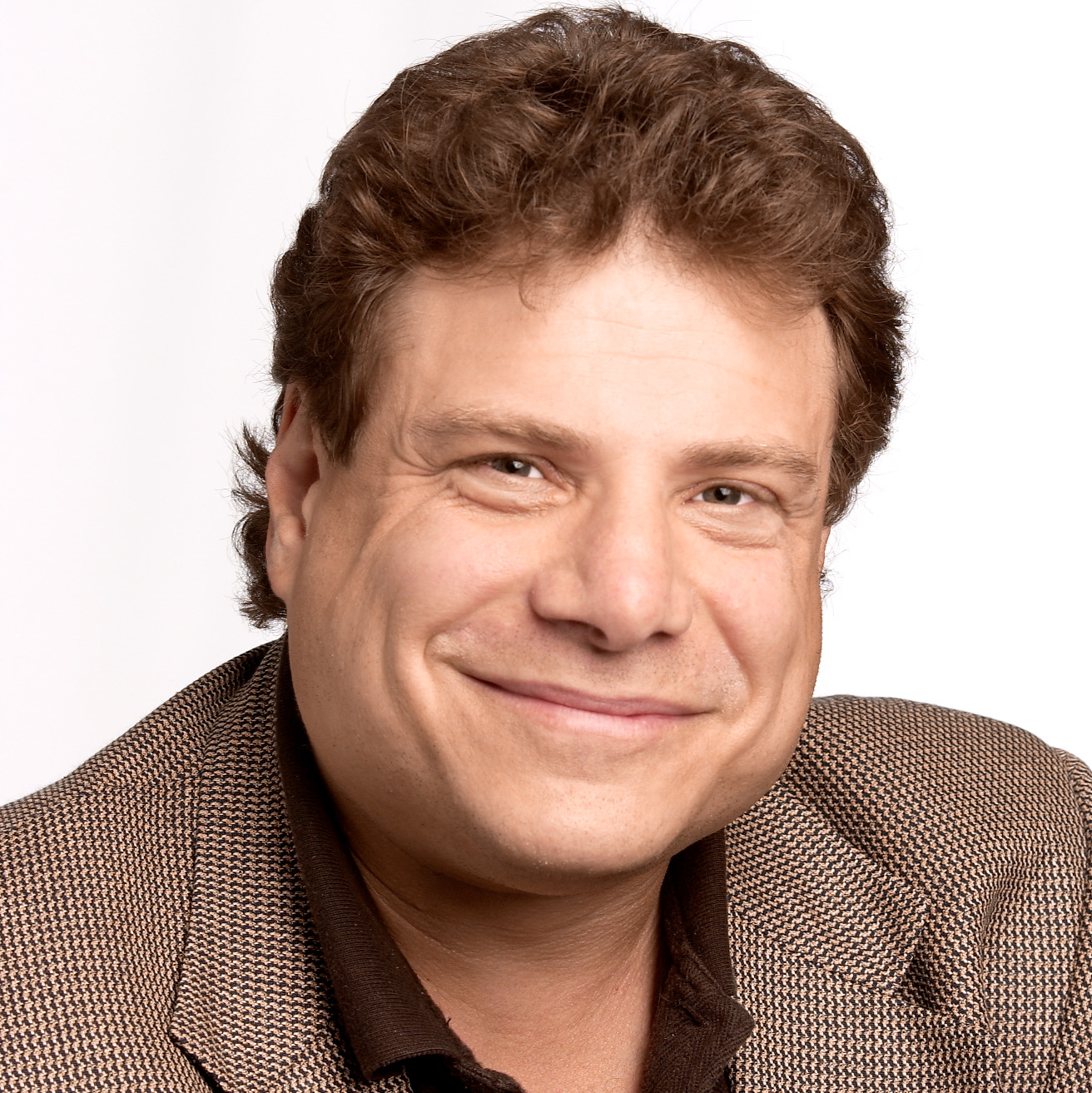
Mr. Perlstein is a senior executive with more than 30 years of diverse, poignant, and pioneering experience in technology industry research, product / service marketing and sales, and project and personnel management working at respected companies such as Gartner, Inc., IBM, GE, and PepsiCo. Since 2011, Perlstein has been an adviser and strategist to a wide range of startups, small businesses, and non-profits, and recently joined The EF Angels Group.
In 2013, Perlstein became CEO of Social Life Management, Inc., an early stage startup developing a SaaS-based online reputation management platform for consumers and businesses. The website launched in July 2015. Previously, Perlstein spent 15 years at Gartner Inc., the largest information technology research and advisory firm, both as Gartner's first ombudsman, and managing the company's largest global research team focused on application development and internet technology.
Living and working in Silicon Valley for IBM (and then Gartner) during the late ‘90s dotcom boom, Perlstein managed programs and products focused on new technology adoption. Perlstein earned a master of business administration in information systems and bachelor of business administration in marketing from Pace University, New York. Perlstein is based in the New York metro area with his wife, Jacquie Marumoto who works for Oracle Corporation, and his 8 year old daughter Avery, an aspiring technologist.
DimOgo Luggage
Executive Summary
DimOgo Luggage purpose is to provide products that make the travel experience as convenient and fluid as possible for travelers. DimOgo was founded by CEO Alexandar Dimcevski and Co-founder Robert O’gorman. Mr. Dimcevski is an international student Majoring in Finance and brings perspective as a frequent traveler. Mr. O’gorman is an international student Majoring in International Management. Passengers spend countless of millions of dollars on unnecessary additional costs.
These costs occur in two distinctive ways: 1) checking in an empty suitcase, 2) purchasing new suitcases for more luggage space. An unnecessary amount of money and time is lost taking care of these problems. DimOgo is making an expandable suitcase that fits the criteria of a small carry-on as well as a large check in a suitcase. DimOgo’s target market is the global luggage industry, worth $31B. From the wealthy to the needy, all categories of travelers that buy luggage. DimOgo narrows the focus to the middle and upper-income individual who considers himself/herself to be a frequent traveler and will pinpoint strong focus on women and business travelers. DimOgo will rely heavily on conventions, such as the 13th annual Summer Luggage, Gift & Travel Goods Show planned by The National Luggage Dealers Association (NLDA).
DimOgo will complement this strategy with search engine marketing and strategically placed commercials. The majority of revenue will be from sales to retailers. With a minority of revenue coming from direct sales to the customer via our web page. Fugo optimizes to solve the same problem as DimOgo, however, DimOgo’s solution is superior. DimOgo also faces competitions from businesses that specialize in aspects of what it does. Samsonite, Rimowa, and Tumi are all partial competitors in this regard. Competitive advantages include: Customers friendly suitcase; emotional appeal with international students and the American Dream; contact with recognized design company; supported by a distributor with 30 years of experience in the luggage industry.
Biography
Alexandar Dimcevski is an international student studying at Pace University, Pleasantville, New York. Originally from Gothenburg, a small industrial and fishing town in Sweden. As a full-time student and part of the Men’s Swimming & Diving Team my day to day schedule is very hectic and a pure enjoyment. I am part of the Lubin School of Business with an expected bachelor’s degree in 2018. What attracts me to my major Finance, in general, is my personal experience of investing in the Swedish markets from my dorm room. I find it very liberating to be in control and accountable for my own financial decisions. I hope my major in Finance and the knowledge that comes it one day will reveal opportunities that I otherwise would have foregone.
Everyday Pace
Executive Summary
Everyday Pace is a calendar planning app for iOS devices which provides support to people with various disabilities. It is a tool which allows them to create schedules and goals for themselves and helps them preserve it daily. This app focuses on supporting people with disabilities who are in a school environment, but it can be used by anyone who wants or needs an accessible, user-friendly planner. This app distinguishes itself from other calendar apps by allowing user-customizability, a high visual appeal, and an achievement scorecard with which to measure their accomplishments by. The user-customizability aspect of the app lets the user take pictures of their own personal environment to associate with their schedule, and the achievement scorecard tracks their success at maintaining these schedules. These scorecards will also allow parents and caregivers to check on an individual’s progress without being too intrusive.
Over the past few years, there have been new initiatives for the inclusion of people with intellectual/developmental disabilities into higher education programs in the US. However, there have not been many, if any, apps developed for this target population. This app will be one of the first of its kind to target this population, and will hopefully pave the way for other apps to become developed in the future to support them. The availability of this app will also allow these students to feel more involved in their school environment.
Currently, the app is being developed by Adil Sanai, a special education student at Pace University, with the support of his professors and peer mentors. Adil currently takes Computer Science classes to learn more about computers, and concurrently uses that information to develop the app. An investment in Everyday Pace will allow Adil to develop the app in a more efficient manner, by allowing purchase of app creation software. When finished, the app will be made available for free on Apple App Store for both iPhone and iPad versions.
Biography
My name is Adil Sanai. I am currently a special education at Pace University in the Seindenberg School of Computer Science. I am in my second year at Pace, and I am expected to finish this special education program in the year 2020. I was born with cerebral palsy. In 1999, I moved to the US from Pakistan. I spent 15 years of my life being unable to stand, walk, or close my mouth. I was very determined to have a better life in the US, so after I arrived, I was able to undergo multiple surgeries to correct these complications from cerebral palsy. I am now motivated to learn about everything life has to offer, and I would like to support others with disabilities like me.
HELPTEER
Executive Summary
Helpteer is a crowdsourcing volunteer application. Typically, volunteer opportunities are posted either as a static list on organizations’ websites, emailed, or sent as a newsletter. However, on Helpteer all of the volunteer opportunities are provided in real time, which allows for effective communication in times of disasters, emergency, and last minute projects. Helpteer aims to breakdown the bureaucracy of organized volunteering and make it a more social experience.
The app uses geolocation to find volunteer opportunities based on where the user is currently located. If the user chooses, they can enter their zip code which will generate a list of nearby projects based on the distance from their location. In addition, the app allows users to post their volunteer opportunities as well as sign up to help at projects that other users have posted. Projects can be from person to person or from an organization looking for volunteers. Users will be notified of opportunities to help out those in their surrounding communities through the app which will be a “call to action” to engage in a project. Organizations and people can view the volunteers that have signed up for their project so that they can appropriately screen and organize them. The app also provides a platform for people to make donations to a project. Helpteer would take a percentage of the donations for helping to facilitate the volunteers.
Helpteer offers organizations and volunteers a more effective way to manage and allocate human resources to volunteer opportunities. Since the updates occur in real time, this feature will allow organizations to send out notification alerts to get volunteers to help others as quickly as possible while other necessary resources are being prepared. The goal of Helpteer is to streamline the organization and notification of different local opportunities for various types of volunteer work.
Currently, the target market for this application would be organizations such as Red Cross, Techo, New York Cares, etc. but also people looking to volunteer for a project within the community. 63.4 million Americans have volunteered through an organization at least once between 2014 and 2015. Organizations could use Helpteer to manage and allocate these millions of volunteers. On an even larger scale, 26% of the world’s population volunteers each year since 2007. Helpteer can continue to expand to be the leading application for organizing volunteers and helping others around the globe.
Biographies

Ian Carvalho is a Computer Science major and talented iOS developer. In 2015, Ian was awarded a grant from the Brazilian Scientific Mobility Program to study at Pace University. With extensive previous work experience, Ian currently has 17 published apps on the AppStore. He acted as the lead developer behind many of these apps. Among his remarkable projects were the development of the first book in augmented reality in Brazil and a Point of Sale application created to promote Hasbro's “Transformers toys". Ian has also previously competed in the Pace Hackathon competition this semester.
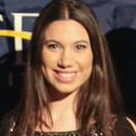
Alexa McKenna is a Pace University student in the graduating class of 2017.
She is majoring in Entrepreneurship from the Lubin School of Business and minoring in Digital Media Studies from the Dyson College of Arts and Sciences. Currently, Alexa is a Dezer Fellow at the Entrepreneurship Lab. In the past, she has participated in the Pace App Hackathon, Pitch Contest, and other eLab events. On campus, Alexa is a CoPresident of the Fashion Marketing Club, ProFASHIONals, and a member of the Pforzheimer Honors College. In the future, Alexa aims to start her own business and manage global tech operations.
MS Keyboard
Executive Summary
With the rapid advancement of technology and practically everything is becoming digitalized, those who struggle with Multiple Sclerosis, cerebral palsy, and other physical impairing diseases find it challenging to adjust to the technology. Multiple Sclerosis makes it very challenging for people to engage in activities on the smart phones or tablets, whether it’d be texting, emailing, writing notes, or whatever the case may be. The main cause of these difficulties is the keyboard. The keys are usually thoroughly small thus making it very difficult to correctly press the key that was intended. The concept of the application is to create a keyboard with the option to choose between two different styles of design. The first design is a keyboard that simply just has larger keys.
The design would allow the user to scroll between each of the letters and correctly choose the key that they desire. This may be slower than the traditional style of keyboard, but it would ensure that the user is pressing the correct key and thus preventing the user from becoming frustrated with selecting the wrong key. The second idea is to re-create a keyboard with only slightly larger keys, but the user would have to press down on the key for a minimum amount of time. This would prevent the user from misclicking any of the keys and when they do press the right key, it would become exceptionally easy for the user to keep their finger pressed down. The application would allow the user to be able to choose between the two of these settings for which ever one they prefer. Whichever keyboard the user does prefer, it will be a lot easier to use due to the easy functionality of the keyboard. Those who suffer from physical impairing diseases like multiple sclerosis and cerebral palsy would be able to type and use their smart phone or tablet very easily.
Biographies
Brandon DeLuca currently lives in Brooklyn, New York and attends Pace University full time with an expected graduation in May 2019. He is majoring in Computer Science with a minor in Information Technology. He currently work two jobs, managing the front-end of a supermarket and doing field technician work for Key Systems in midtown Manhattan. Computer Science is a world changing field, and he has been interested with and working with computers since his years of early adolescence. He continues to keep up with current technologies as in the future he would like to pursue a career in the field of cybersecurity.
Connor Magee is a full-time student at Pace University. He is only a freshman in his second semester at Pace and is expected to graduate May 2019. Currently he is majoring in computer science with a dual-minor in computer information technology and information assurance in the criminal justice system. During his free time he enjoys exercising, reading, and anything else that concerns learning more about computer science. He has known that computer science is his passion since the beginning of high school ever since his cousin introduced to. He knows for a fact that computer science will be his passion for the rest of his life.
Ivan Tang is a full time freshman Computer Science major with a minor in Information Technology, at the Seidenberg School of Computer Science and Information Systems. He has an expected graduation in May 2019. He currently lives in Brooklyn, New York. He has grown up with computers and is always constantly attempting to learn more about computers and technology. Alongside with Dr. Coppola, he hopes to make technology more efficient for the elderly. Technology is moving very fast and is very innovative and doesn't wait up for the elderly. As a side hobby, he enjoys building computers to keep up with modern advancements. He also enjoys helping his friends and family with computer related issues whenever he can. In the future, he hopes to use his knowledge in computer science to aid people and make their lives simpler. This is his first time participating in the Pace Pitch Contest alongside his classmates.
MugClubs.com LLC
Executive Summary
MugClubs.com is a technology based marketing and selling tool what will be marketed to bars, brewpubs, and breweries. We will operate using a SaaS model, providing our service for the nominal cost of $60 - $100 per month. Our customers will utilize our product to host an online Mug Club for their patrons, who can interact with the product by downloading a free app for their phone or tablet. Company Background: MugClubs.com was founded in 2015 as a result of the founder’s desire to develop a platform that would leverage SaaS principles to the bar and nightclub industry. Specifically, the first product platform will target Mug Clubs, which are a popular marketing and sales tool employed by drinking establishments. To date nobody has brought forward a digital solution to facilitate their adminstration and execution, thus putting the investment of time, resources, and money solely on the establishment’s management. Management: MugClubs.com is run by Founder and Managing Director, John Harrison. Mr. Harrison has extensive experience in corporate finance, strategy, M&A, market research, new product analysis, and commercial management. In addition, he is a small business and bar owner, which has given him unique insight into our market and target customer.
Products/Services: MugClubs.com will offer an online portal so the customer can manage their mug club, and will provide free access to a linked app that patrons can download to their smartphone or table. Technologies/Special Know-how: The technology platform will include a website (portal) and associate app, which when used in tandem will be the means by which the Mug Club is hosted for the customer. We have contracted a third-party technology firm to execute the development of the technology and will establish a retainer agreement for tech support. Market: We estimate, based on various websites and market analysis reports, that there are between 150,000 and 300,000 drinking establishments in the United States. Of this amount, we believe that roughly 10% would be categorized as our "target customer". This subsequently leaves us with 15,000 to 30,000 in our addressable market. Distribution Channels: our product will be sold via our website, MugClubs.com, which will provide access to the customer’s management portal. The apps will be distributed via the Apple and Android app stores. Competition: At this time we have no direct competition.
Mug Clubs that exist today are administered locally by each bar, and are not executed using a technology platform. In a sense, we are competing against the bar owners themselves as we must strive to justify that our product is worth paying $60 a month for, as a means of avoiding the “Do It Yourself” model.
Biography
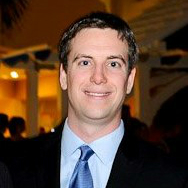
Mr. Harrison is presently a full-time student at Pace University pursuing his MBA in Strategic Management, where he is also a Graduate Assistant at the Entrepreneurship Lab. Beyond his studies, Mr. Harrison completes consulting work for a technology start-up in the food service industry and as the Finance lead for a Biopharma start-up that is specializing in stem cell research. Furthermore, Mr. Harrison is the acting Controller for Some Spider LLC, a digital media start-up with annualized sales of over $1.5 million. Lastly, John has been a small business owner since 2014 when he purchased, remodeled, and rebranded a bar & restaurant in San Angelo, TX.
Having graduated Lehigh University with a Bachelor’s of Science in Accounting and Finance in 2005 John chose to pursue his professional interests at Johnson & Johnson. Over the next eight years John took on increasing levels of responsibility rising to the position of Senior Manager before leaving J&J in 2013. Mr. Harrison left corporate life to pursue his MBA as he desired the opportunity to be in a faster paced and more agile environment. The opportunity to make decisions that actually impact business outcomes has led John to make the leap into entrepreneurship, and has inspired his efforts to create MugClubs.com.
Ondori Anime
Executive Summary
Japanese animation (more commonly known as Anime) fans in America are one of the most passionate fans ever. They go to conventions and often, spend hundreds of dollars on action figures and stuffed animals. But one thing they cannot always do is support the shows they like the most. The main reason is because of the complicated process of licensing anime merchandise in addition there is only one small American merchandiser, therefore many shows fans love fall between the cracks. The other reason is many of these merchants are confined to a very small booth or a slightly bigger permanent storefront. Therefore, they can only fit the most popular shows into their shops. This has created an opportunity due to the customers not having access, to merchandise for around 90% of the shows released. This in turn creates the problem that the fans cannot give money to the production most shows, meaning they are less likely to get any additional seasons. So for a new retailer to succeed, they must integrate these other shows into their inventory, to offer customers better selection.
On the surface the anime industry looks like a very niche market, but it is one of the fastest growing industries in the entertainment sector. The anime industry in North America is estimated to be worth 2.7 billion dollars as of 2014, which is up from 1.8 billion in 2010. In this market, the customers Ondori is targeting is young professionals who are anime fans, that are college educated who have a yearly budget for anime. These customers are about 30% of the population of anime fans, but make 65% of all purchases. They generally allocate a budget of 200-500 dollars towards anime and anime merchandise a year. Through customer interaction and research, the founder has determined they value Selection, convenience, and atmosphere. The only crux with this industry is that the customers are very spread out across the country. But there are certain times when all the customers come together and that is when an anime convention comes around, in which many fans come from all over to take part, including a large percentage of Ondori’s target market. Making this an extremely lucrative opportunity for a temporary retail operation.
Ondori’s solution to the customer’s problem is to open pop-up stores, in and around anime conventions. The company will specialize in having a diverse selection with both popular shows, as well as shows and merchandise not offered by many of our competitors. With pop-up shops as opposed to conventional booths, Ondori can offer more selection due to us having more space. The founder also has made a contract with the largest Japanese merchandisers, to import the products not commonly sold in America. Also with the company’s pop up store model it gives us the flexibility to get a storefront, near the event space for a low upfront cost. This will allow the desired customers the ability to simply walk to the stores, which will only be a few blocks away giving them the convenience factor. The company will also emphasize the customer experience by implementing events, music, in store advertising, and screenings. All of these events will attract the customers during the periods in-between panels, as well as once they leave the convention. With all of this Ondori expects to achieve a gross 40 dollars per square foot. Ondori’s anticipates average customers spending 80 dollars per visit which is on average ten percent less than those found in the company’s research. In our first year’s operation Ondori plans to open one store outside of a popular anime convention in New Jersey, as well as test three additional markets with small booths inside the conventions. All of this will allow the company to be both financially successful and help spread the joy of anime.
Biography
My name is Christopher Dunn-Meynell I’m originally from Warren, New Jersey. I am a current senior at Pace University, in the Lubin School of Business. I currently am majoring in entrepreneurship. I have on past venture in which I started my own food business selling food services at my high school’s events. It was very successful and helped finance a lot of my high school’s clubs. During college I got a few jobs but mainly I worked for Spirit Halloween as a manager for three years. During my time with them I was appointed assistant manager of the flagship store in New York, their Times Square store, brought in to save an underperforming store, as well as construct 18 pop-up stores. I was also appointed the official training manager for the company’s charity division for my entire district, in which raised $40,000 for The Children’s Hospital in Bellevue. I personally enjoyed this job so much, that I have decided to combine all of the things I’ve learned from it, with my other passion anime to help bring joy to all my fellow anime fans. I always live by my motto to work smarter AND harder.
TRIESSS •Swim•Sand•Surf•
Executive Summary
This is the product pitch for an innovative solution to slippage and instability in women’s active swimwear. Picture this: A lifeguard spots a patron flailing in the ocean. She blows her whistle and dismounts off of the stand. She starts running into the ocean and her suit bottoms being an upward progression between her ‘cheeks.’ No time for adjustments, she hurdles over the waves and dives into the ocean. Now, battling waves, her suit top is sliding off her chest; hit on the right by a wave, her suit shifts to the left side of her body. These are the struggles any women partaking in any athletic activity while wearing a bathing suit. Likewise similar scenarios occur on a daily basis for surfers, swimmers, yogi’s, paddle boarders, the list goes on.
The product solution to these everyday happenstances is a bikini with a structure, fabric, and detailed grip lining that will provide maximum stability and NO slippage. Now, one could argue, why not just wear a one piece? Yes, that is a solution however not everyone wants to wear a one piece, get one piece tan lines, or be restricted by a full suit, and why should they have to?
The TRIESSS •Swim•Sand•Surf• brand will provide fashionable bathing suits engineered to grip and hug the body, flattering every curve, while staying in place when life tries to move it. This will be accomplished by three design techniques: The cuts of the suits will intertwine fashion trends and stability for the chest. Cross back ties of the suit, ties on the bottoms, and a cheeky cut will keep the suit in place. The second, but crucial piece to this suit design is a two strip silicone ‘no slip grip’ lining. Two strips of this fabric, seamed into the fabric of the suit. The silicone lining will go on ALL edges of the suit including: breast linings, around the rib cage, hip, and leg holes. This will give the suit already tied to perfect fit the body of the wearer, extra grip to the skin. Lastly, the brand is supposed to hold high fashion standards as well. It will not lack style to compromise for stability like most suits of it’s nature.
TRIESS •Swim•Sand•Surf• suits will be a beacon of hope for fashionable athletic women who want to feel confident and sexy in their bikinis.
Biography
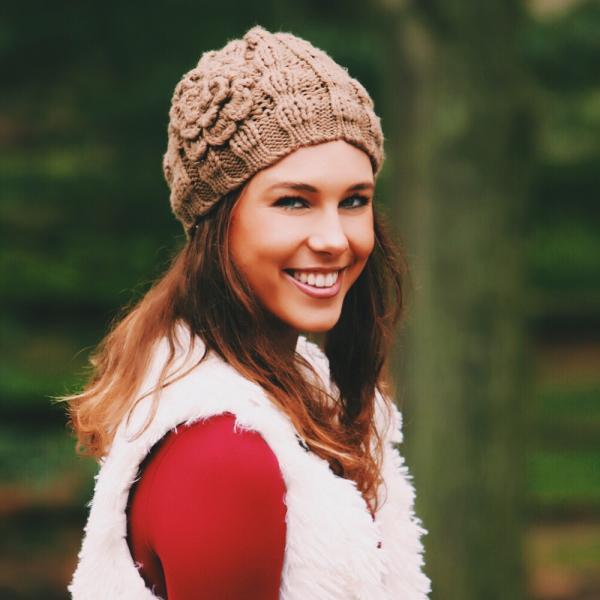
Scarlett Loughlin is a swimmer, surfer, yogi (practicing yoga), fashionista, blogger, social butterfly, and a full time student-athlete. I keep a well-balanced life of immersing myself in all aspects of my passions. One morning at swim practice this summer, my idea of an athletic training bikini or women of my likeness, would benefit the society of actively athletic women. Being a fashion lover and athletic, I paired together what I know, what I need to know, and how I would go about doing so, all in one swim practice. I eagerly jumped out of the pool to write down what is now a work in progress, TRIESSS – •Swim•Sand•Surf• -- What will be my bathing suit line. As I have been inspired by my passions, I hope to use my company and product to inspire others to live a happy, healthy, life, and to follow their dreams.
About the Contest
The Pace Pitch Contest is based on the Elevator Pitch concept, popular in the venture capital community. It is an extremely concise presentation of an entrepreneur's idea, business model, marketing strategy, competitive analysis, and financial plan, which is delivered to potential investors. The premise is that it could be made in a few minutes, should the entrepreneur spot a potential investor on an elevator and have the opportunity to pitch their idea during the brief ride.
Each Finalist will have exactly three minutes to pitch their new venture idea to a distinguished panel of judges and an enthusiastic audience. In addition to broad participation at Pace, we have been pleased to welcome student competitors from a number of other universities, including Columbia, Harvard, MIT, NYU, Princeton, and Stanford.
Each individual/team will have 3 minutes to make a pitch and may use up to 5 PowerPoint® slides. The pitch must be an original concept, created by the presenter(s).
Here's How to Enter
1. At least one member of your team should meet one of the following two criteria:
- Full or part-time student currently enrolled in Pace University
- Recent Pace University graduate (graduated within the past 18 months)
AND if you have already launched the venture, it must have been in business for less than 2 years and received less than $100,000 in funding.
2.Register online. Each member of the team must complete the Registration Form through the online competition management system.
Deadline - 5:00 p.m. EST on Monday March 21, 2016
3.Submit a biography. Each biography (if competing as a team, each member must submit a biography) MUST be a minimum of 100 words and a maximum of 200 words. Please be sure to indicate your status as a student (college/university and school, degree, major, full or part-time status, and expected year of graduation) or as a recent graduate (college/university and school, degree, major, and date of graduation).*
Deadline -5:00 p.m. EST on Monday March 21, 2016
4. Submit an Executive Summary. You should prepare a ONE PAGE Executive Summary to be used on the Pace Pitch Web site and in the printed program.*
Deadline - 5:00 p.m. EST on Monday March 21, 2016
5.Finalist Announcement. The names of the finalists will be announced on Monday April 4, 2016
6.Submit a photo. If selected as a Finalist or alternate, you must submit a digital photograph (approximately 100 KB - 1 MB in JPEG format) to be used on the Pace Pitch Web site and in the printed program.*
Deadline -5:00 p.m. EST on Friday April 8, 2016
7.Submit a PowerPoint® presentation.If selected as a Finalist or alternate, you may submit up to 5 PowerPoint® slides to be used with your pitch (the 5 slide maximum includes a title slide and none of the slides may include external hyperlinks, embedded video, or transitions that 'effectively create' more than 5 distinct slide images). PowerPoint slides are not required and may not be used if not received by the deadline. Presentations in other formats will not be accepted.*
Deadline -5:00 p.m. EST on Monday April 11, 2016
8. Make Your Pitch! The finalist/alternate contestant must arrive at the One Pace Plaza, Bianco Room (formerly Multipurpose Room), New York, NY. 10038 by 5:00 pm EST on Thursday April 14, 2016
* All documents must be submitted online through the online competition management system
Click here to watch the video guide to the Competition Management System
Here's How the Pace Pitch Contest Works:
On Thursday, April 14, 2016, finalists will make their pitches to a panel of judges in front of an enthusiastic audience. There is a strict time limit of three minutes for all pitches. Contestants will present in alphabetical order. After each pitch, the judges may ask a number of questions. All answers must be kept to less than one minute. Immediately after the pitches have been made, the judging panel will decide on one winner from each category based on the Guidelines and Judging Criteria. The Pace Pitch Contest has proven to be an exciting, educational, and fun event. We hope you will enjoy the event and find it valuable.
If you have any questions, please feel free to contact Professor Bruce Bachenheimer, Executive Director, Entrepreneurship Lab, at bbachenheimer@pace.edu or Nikhil Kalyankar, Associate Director, The Entrepreneurship Lab at nkalyankar@pace.edu
Good luck!
The deadline to enter the Pace Pitch Contest is 5:00 p.m. on Monday, March 21, 2016
New Business Concepts Pitch Guidelines | Social Ventures Pitch Guidelines | Ten Questions That You Should Try To Answer
New Business Concepts Pitch Guidelines
New Business Concepts will be evaluated on the following judging criteria.
- 1. Business Description: Details of the venture and what it does.
- How well was the concept explained?
- How reasonable, sustainable, and scalable is the new concept?
- 2. Market Analysis: Characteristics of the market and description of its customers.
- Is there a genuine need for the product or service?
- How well was the target market defined?
- What is the size and growth of the market?
- What is the consumers' willingness to pay for the product/service?
- 3. Product or Service Analysis: The specifics of the product or service.
- Is the description clear?
- Is the product feasible?
- How easily it can be duplicated?
- Is there a presence of potential substitutes for the product?
- 4. Competition: Identify current and potential competitors.
- Have the current and potential competitors, competitive response, and analysis of strengths and weaknesses been adequately defined?
- 5. Marketing Strategy: How sales will be achieved.
- How realistically defined is the marketing plan?
- Does the plan adequately address price, product, place, and promotion?
- Are resources sufficiently allocated for marketing?
- 6. Operations: How the product or service will be produced and delivered.
- What is the likelihood of securing resources required for production?
- Is there an ability to operate competitively and grow?
- 7. Management: An assessment of the entrepreneur(s) and team.
- Does the team exhibit the experience and skills required for operation?
- What is the depth and breadth of the team's capabilities?
- Does the team demonstrate the ability to grow with the organization and attract new talent?
- 8. Finances: An overview of the required resources and economics of the venture.
- How compelling is the business model?
- Have the resources required for the venture been addressed?
- Has the team clearly and adequately presented a breakeven analysis?
- How reasonable are the financial projections?
- Are there prospects for long-term profitability?
- 9. Investment Proposal: The terms and conditions offered to investors.
- Did the entrepreneurial team explain funding?
- Were offerings to investors and anticipated returns clearly explained?
- Did the team calculate a realistic valuation?
- How feasible is the exit strategy?
- 10. Presentation: Overall effectiveness of the actual presentation.
- Did the presenter(s) engage the audience and hold their attention?
- Did the presenter(s) appear to speak with confidence authority?
- Were visual aids (i.e. PowerPoint® slides) clear and valuable?
- Was the pitch exciting and compelling?
- How efficiently did the team allot their time?
Social Venture Pitch Guidelines
Social Ventures will be evaluated on the following judging criteria.
- 1. Assessing the Need: An analysis of the social issue and its affected population.
- Does the proposed venture address a significant and critical social problem?
- 2. Well-defined Target: Characteristics of the market and targeted population.
- Does the proposed venture adequately describe the problem it hopes to address and have defined parameters within which it plans to operate?
- 3. Management: An assessment of the entrepreneur(s) and team.
- Does the entrepreneurial team possess the skills and experience required to translate the plan into action?
- Can they demonstrated the passion, commitment, and perseverance required to overcome inevitable obstacles?
- Is the team comprised of individuals committed to ethical standards?
- 4. Creativity: A demonstration that the proposed solution displays a unique approach.
- Does the proposal approach the social problem in an innovative, exciting, and dynamic way?
- 5. Feasibility: A demonstration that the venture can be successfully implemented.
- Does the initiative aspire towards clear, realistic and achievable goals, while thinking big?
- Can it be implemented effectively?
- 6. Planning: A clear and well-defined strategy to achieve objectives and goals.
- Are there clear and coherent schedules, milestones, objectives, and financial plans?
- 7. Operations: How the product or service will be physically produced and distributed.
- Has adequate attention been given to the way in which the product or service is to be produced and/or delivered?
- Do they have, or can likely secure, the resources required for production?
- Will they be able to operate competitively and grow?
- 8. Sustainability: Long-term prospects for viability and success.
- Does the proposed venture include adequate strategies for fundraising and income generation?
- Does it consider the different dimensions of financial and social sustainability in a conscientious manner?
- 9. Social Impact: The value that the new venture will bring to society.
- How will the implementation of this social venture benefit the community and the multiple stakeholders involved?
- Is there the potential for significant social impact and engagement of the broader community?
- 10. Presentation: Overall effectiveness of the actual presentation.
- Did the presenter(s) engage the audience and hold their attention?
- Did the presenter(s) appear to speak with confidence authority?
- Were visual aids (i.e. PowerPoint® slides) clear and valuable?
- Was the pitch exciting and compelling?
- How efficiently did the team allot their time?
* While there is some debate regarding the precise definition of a social venture, and what exactly differentiates it from a traditional for profit business, the Selection Committee and Judging Panel will use the following criteria:
- PRIMARY MISSION - is the organization's primary purpose to serve its owners (New Business Concept) or society (Social Venture)
- PRIMARY MEASURE OF SUCCESS - does the organization measure its success primarily by profitability (New Business Concept) or positive social change (Social Venture)
Ten Questions That You Should Try To Answer
Whether pitching a New Business Concept or a Social Venture, try to address the following ten big questions as completely as possible. Remember, you should not simply talk about a general idea (those are "a dime a dozen"), rather, try to present a concise concept with a cleareconomic model, convincing everyone that you can actually make it happen.
- 1. What's the PROBLEM?
- 2. What's your SOLUTION?
- 3. How large is the MARKET?
- 4. Who is the COMPETITION?
- 5. What makes you so SPECIAL?
- 6. What's your ECONOMIC MODEL?
- 7. How exactly will you achieve SALES?
- 8. Have you assembled a qualified TEAM?
- 9. How will you secure required RESOURCES?
- 10. What are you proposing for an INVESTMENT?
Suggested reading: The Art of the Start by Guy Kawasaki (Penguin 2004), especially Chapter 3, "The Art of Pitching"
First Prize
A $1,000 cash prize will be awarded to the winner.
Second Prize
A $500 cash prize will be awarded to the second place.
Third Prize
A $250 cash prize will be awarded to the third place.
Pace University reserves the right to disqualify, at its sole discretion, any individual or team from the competition at any time (before or after the Pitch Contest or the award of any prize) for any reason. Reasons for disqualification may include, but are not limited to, misrepresentations in the application process, plagiarism, infringement of the intellectual property of others, and any failure to comply with the rules of the competition. Disqualified individuals or teams shall forfeit any and all prizes awarded to them.
Previous Pitch Contests
|
Eleventh Annual Pace Pitch Contest (April 16th, 2015)
|
![[Pitch Contest Brochure]](/lubin/sites/pace.edu.lubin/files/WFO/Images/pitch/2017/2016 Pace Pitch Flyer- Letter Size.jpg) Click to download the full Official Program for the Twelfth Annual Pace Pitch Contest (PDF). |
For additional information, please contact:
Bruce Bachenheimer,
Clinical Professor of Management and Director, The Entrepreneurship Lab
Tel: (212) 618-6663
Fax: (212) 618-6664
E-mail: bbachenheimer@pace.edu
Web: webpage.pace.edu/bbachenheimer
Address: Pace University
Lubin School of Business
Department of Management, Room 342
163 William Street
New York, NY 10038
Nikhil Kalyankar,
Associate Director, The Entrepreneurship Lab
Tel: (212) 618-6667
E-mail: nkalyankar@pace.edu
Address: Pace University
The Entrepreneurship Lab
163 William Street, 3rd Floor
New York, NY 10038
![[Pace Pitch Contest]](http://appsrv.pace.edu/Lubin/images/pitchcontest/PacePitchContest.jpg)


![[First Place]](/lubin/sites/pace.edu.lubin/files/WFO/Images/pitch/2016/zg4FB7o.jpg)
![[Join our mailing list]](https://www.pace.edu/lubin/sites/pace.edu.lubin/files/WFO/Images/entrepreneurship/JoinOurMailingList.jpg)
 Visit us on Facebook
Visit us on Facebook




